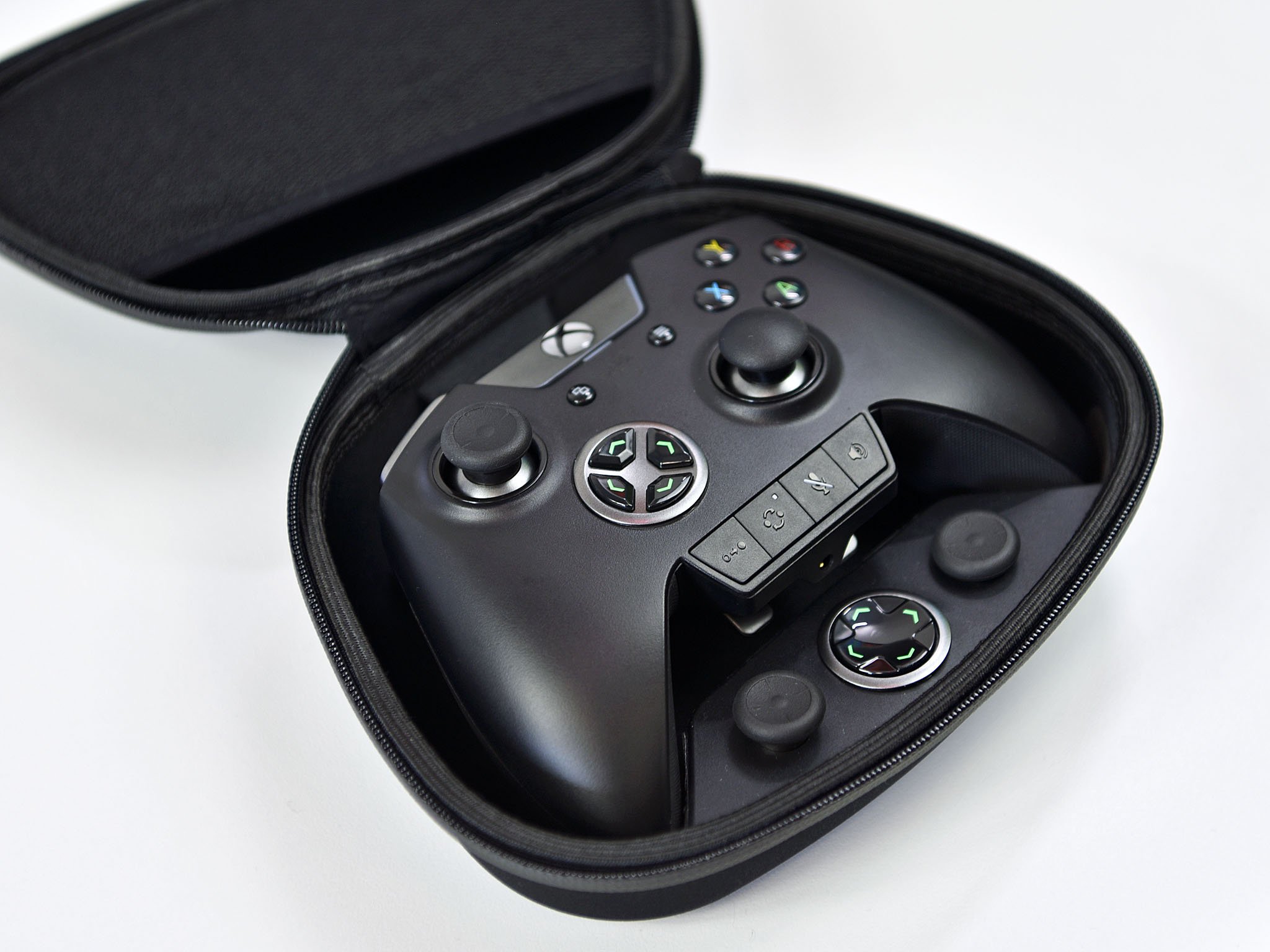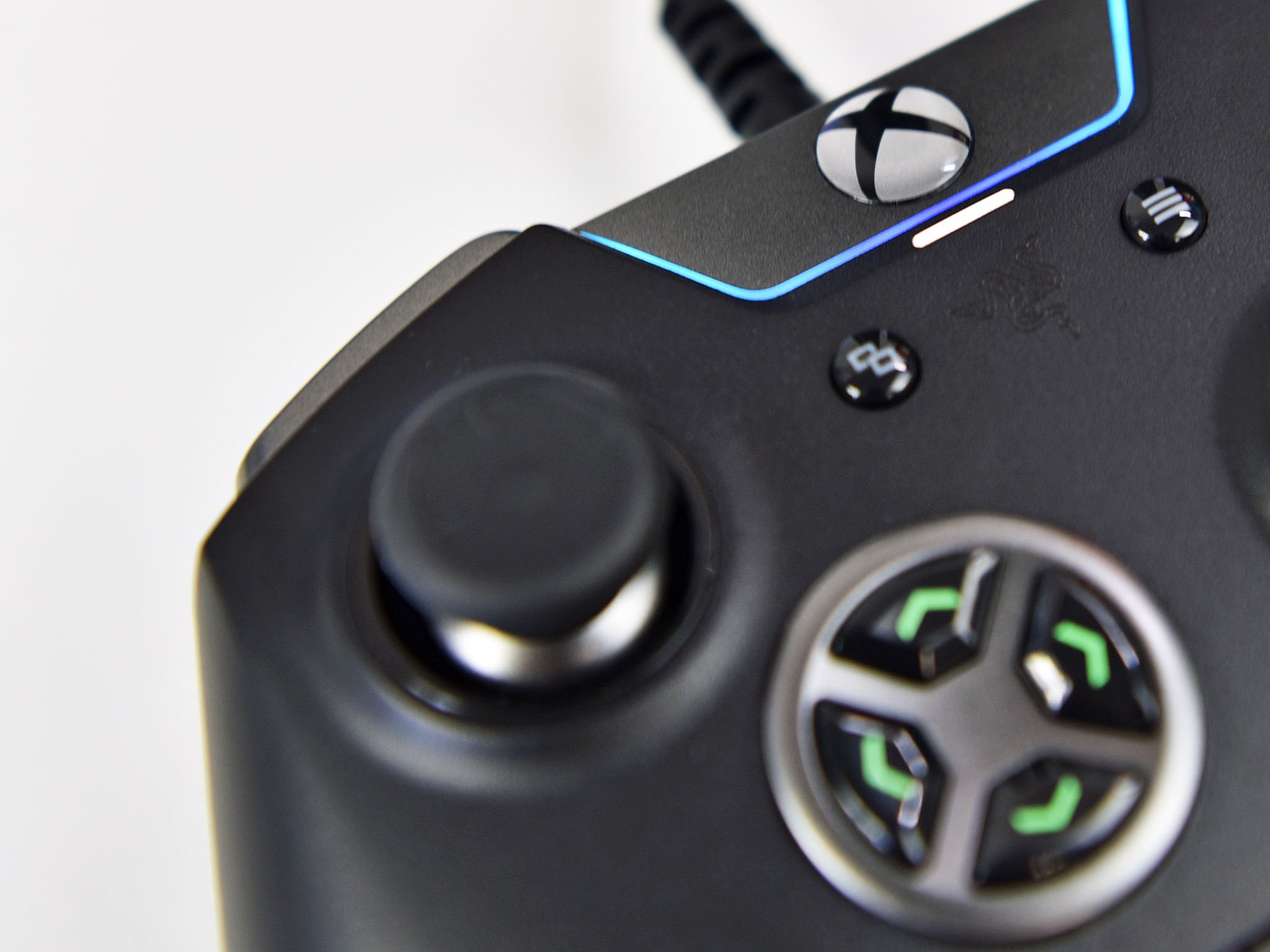Razer Wolverine Ultimate review: A welcomed wired alternative to the Xbox Elite controller
Priced at $160, Razer's Wolverine Ultimate goes beyond the Xbox Elite controller offering pro-level performance with a bit of fun too.

The fun thing about the gaming world is the different levels of commitment to the genre. Gaming console users range from the casual to the more hardcore, and increasingly we see a crossover from PC to Xbox.
That shift is also relevant for gaming accessories, and the new Raze Wolverine Ultimate controller takes on Microsoft's Xbox Elite one while adding a few unique advantages.
I've been using the Wolverine Ultimate for a few weeks now and here is what I think.
Razer Wolverine Ultimate controller features and specs
There are a few significant differences that differentiate Razer's Wolverine Ultimate from the competition. The fact it is wired is a plus for those who disfavor or perceive, any latency due to the wireless nature of most gaming controllers. Wired also means less hassle due to no batteries, and you couldn't get that sweet Chroma RGB lighting without some external USB juice.
Additionally, there are some differences with the buttons – both in number and design – and customizability. It's the latter where the Wolverine Ultimate shines. While the Xbox Elite controller has profiles and button assignments, the Wolverine Ultimate takes it to the next level.
- Remappable 2 Multi-Function Buttons & 4 Triggers
- Razer Chroma lighting with full 16.8 million color options
- Interchangeable D-Pad – Choice between Individual and Tilting Designs
- Interchangeable Thumbsticks
- Hair-Trigger Mode with Trigger-Stop for rapid-fire
- Quick Control Panel
- Tactile Switch Action Buttons
- Ergonomic Non-Slip Rubber Grip
- Razer Synapse for Xbox app
- Razer Chroma SDK enabled
- Play on Xbox One or PC
- 3.5 mm audio port for stereo audio output and microphone input
- Carrying case
- Detachable 3 m / 10 ft lightweight braided fiber cable with Micro-USB connector
- Approximate size: 106 mm / 4.17 in (Length) x 156 mm / 6.14 in (Width) x 66 mm / 2.60 in (Height)
- Approximate weight (without cable): 260 g / 0.57 lbs
The familiar adjustable trigger buttons with trigger-stop for rapid-fire shortens the travel making the buttons ideal for first-person shooters or other quick reflex games. The mechanism works the same as on the Elite but with slightly different sliders (horizontal instead of vertical).

Of course, you can swap out the D-pad with a secondary style (flatter) and change the thumbsticks with taller ones, more rounded, etc. All of those are included and stored in the nifty zipper shell case for safekeeping and travel. Being magnetic they just pop on and off but are sturdy enough not to fall off accidentally.
All the latest news, reviews, and guides for Windows and Xbox diehards.
There are four triggers on the back instead of magnetic and removable paddles like on the Xbox Elite controller. I like the design better on Razer as it's one less thing to lose (or fall off). Moreover, with triggers being permanent, they don't interfere with normal gameplay in case you choose to ignore them.

On the front, Razer includes quick buttons to mute the volume of your headset, shift volume (through various preset levels that cycle), change profile, and more. It's a clever design, one that is reminiscent of the Xbox headset adapter that used to come in the box with the difference of being permanent. The same area houses the 3.5mm headset jack for audio and the microphone, which is expected.
The back of the controller is textured with grip and feels soft but sturdy in hand. There was no creaking when trying to flex the Wolverine Ultimate and build quality seems excellent.

Weighing in at 260 grams (0.57lbs) the Wolverine is significantly lighter than the Xbox Elite controller with batteries (348 grams or 0.77lbs). While heavier weight is often associated with a more premium feel, I'd argue that a lighter controller after a few hours is easier to use.
Overall, I have no significant complaints about the design of the Razer Wolverine Ultimate. It borrows heavily from the Xbox Elite controller but also improves upon it in some areas like the rear triggers (instead of paddles) that do not fall off, configurable vibration, and abilities to tweak performance via the Razer Synapse app for the Xbox One.
Razer Synapse for the console
Razer has brought over a lighter version of Synapse that runs on the Xbox One now.
The app lets users configure the Chrome RGB LEDs on the front of the Razer Wolverine Ultimate, manipulate the haptic feedback, assign button functions, and adjust Focus and Agile. Those last two features are for the two thumbsticks giving users the ability to switch to different modes mid-game, like when using a sniper rifle, and you will want a slower, more precise movement with the thumbstick for targeting.

It's a bit tricky to get used to as you are introducing a new "muscle memory" level to your gameplay, but once you work Focus and Agile into your gaming routine it is hard to go back to a controller without the option. Indeed, the feature can give you a significant advantage to other console players and brings your Xbox One more up to the level of a PC gaming experience.
The Razer Synapse software also lets you assign and store profiles to the controller for your favorite games, something that PC gamers are used to with high-end gaming mice.
Razer Wolverine Ultimate – pricey, but worth it (for some)
Apparently, the Razer Wolverine Ultimate is aimed at the more pro-level gamer or those who just game a lot and are looking for a competitive advantage on the console. The Wolverine Ultimate brings many more configuration options than what Microsoft offers through its Elite controller.

Those extra triggers and ability to manipulate the thumbsticks for precise or agile are also very significant for first-person shooters where the being in a closed (versus open) environment and switching between a shotgun and sniper rifle all require different movement and behavior.
Priced at $160 the Razer Wolverine Ultimate is by no means cheap, in fact, it's about $10 more than the Microsoft Xbox Elite controller. For that extra $10 you get a wired setup, RGB lighting, two additional configurable buttons, quick-access buttons for mute, volume, and profile, more customization options, and more precise thumbsticks.

My only real complaint with the Razer Wolverine Ultimate is the USB cable, which has a quick-detach feature with what looks like an old PS/2 adapter. On more than one occasion I had had that release mechanism leave behind the USB plug in the Xbox (or PC) leaving me with a useless cable when I switched to a new device. This experience may only be an issue if you bring the Razer Wolverine Ultimate with you or switch between PC and console, but it can be annoying.
Likewise, although the cable is micro USB (at the controller end), you'll be hard-pressed to use any spare micro USB cable you have laying around because Razer uses a small cutout receptacle. That means if you misplace or lose the included Razer cable, you're going to have a lousy time gaming.

Pros:
- More triggers, more customizations than Xbox Elite controller.
- Razer Synapse software for Xbox One is excellent.
- Agile and Focus controls for thumbsticks is fantastic.
- Not a heavy controller.
Cons:
- Not cheap.
- Wired-only with a particular micro USB cable.
- Feel, and response to buttons may not be everyone's favorite.
Putting aside cable issues I often preferred the Razer Wolverine Ultimate to the Xbox Elite if only for some of the minor improvements like a lighter feel and those extra buttons. Whether the Wolverine Ultimate is worth it for you comes down to your wallet, needs, and expectations, but overall Razer has created a fine – and in some ways better – alternative to Microsoft's high-end Xbox controller and that's not bad at all.

Daniel Rubino is the Editor-in-chief of Windows Central. He is also the head reviewer, podcast co-host, and analyst. He has been covering Microsoft since 2007 when this site was called WMExperts (and later Windows Phone Central). His interests include Windows, laptops, next-gen computing, and wearable tech. He has reviewed laptops for over 10 years and is particularly fond of 2-in-1 convertibles, Arm64 processors, new form factors, and thin-and-light PCs. Before all this tech stuff, he worked on a Ph.D. in linguistics, performed polysomnographs in NYC, and was a motion-picture operator for 17 years.
